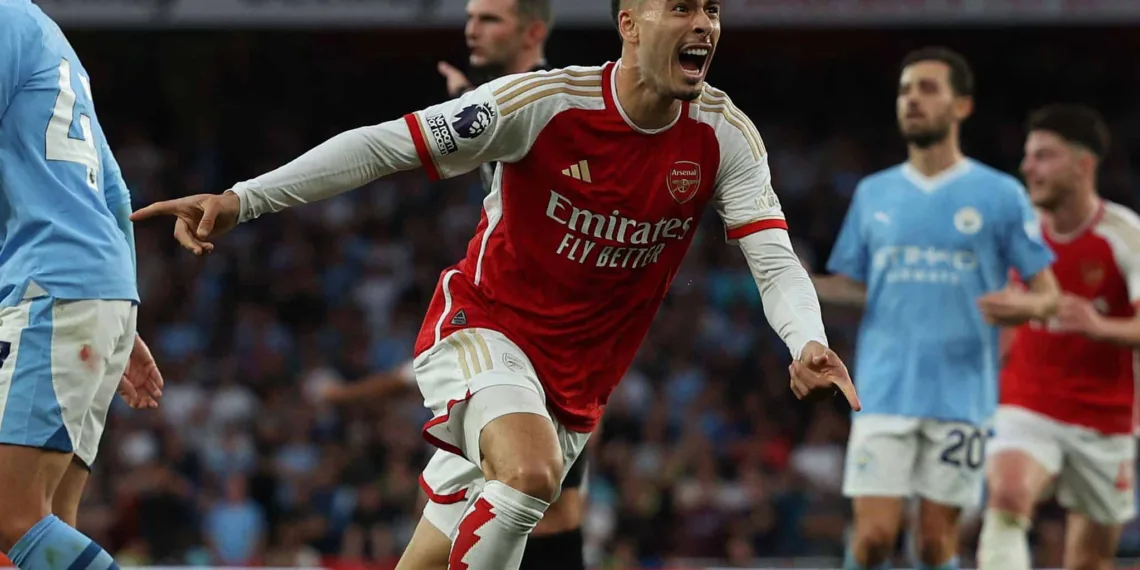In a highly anticipated clash between Arsenal and Manchester City, two top-tier managers, Pep Guardiola and Mikel Arteta, faced off in a tactical battle that left football enthusiasts eagerly discussing the intricacies of the game. This comprehensive analysis delves deep into the key aspects of the match, ranging from the out-of-possession strategies employed by both teams to the crucial impact of substitutions. Furthermore, we’ll explore the role of Gabriel Martinelli, a standout player who made a significant difference in the contest.
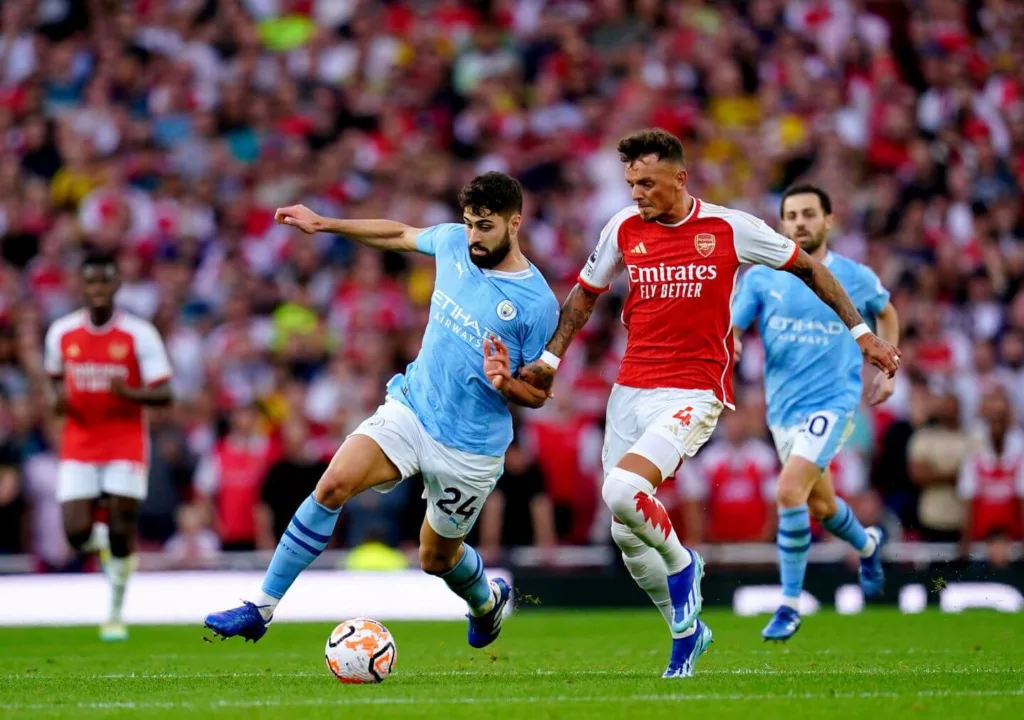
Read More: North London derby fallout: 3 talking points as Arsenal and Spurs play 2-2 draw
Pep Guardiola vs. Mikel Arteta
The showdown on the touchline between Pep Guardiola and Mikel Arteta, former colleagues at Manchester City, added an extra layer of intrigue to the match. Both managers had distinct strategies in mind, and their tactical approaches unfolded throughout the game.
Pep Guardiola, renowned for his innovative tactics, set Manchester City up with a specific game plan. Meanwhile, Mikel Arteta, influenced by his time working under Guardiola, devised a strategy aimed at countering City’s strengths and exploiting their weaknesses.
Focus: Out Of Possession
A central theme of this match was each team’s approach when out of possession. Arsenal adopted a 4-4-2 defensive block that was fluid enough to transition into a man-to-man press when necessary. Their primary objective was to minimize Manchester City’s central progression. By pressing high and forcing City to play through wide areas, Arsenal sought to disrupt City’s usual rhythm.

On the other side, Manchester City attempted to capitalize on Ederson’s exceptional ball-playing skills, a hallmark of Guardiola’s teams. However, Arsenal’s press made it challenging for City to advance the ball comfortably from the back. The battle for control in midfield became a pivotal aspect of the match.
Impact Subs
One of the defining features of this contest was the impact of substitutions made by both teams. Gabriel Martinelli’s introduction in the second half proved to be a game-changer for Arsenal. Prior to his arrival, Arsenal’s attack had been somewhat one-sided, with Gabriel Jesus taking the lead. Martinelli’s inclusion injected much-needed dynamism into Arsenal’s offensive play.
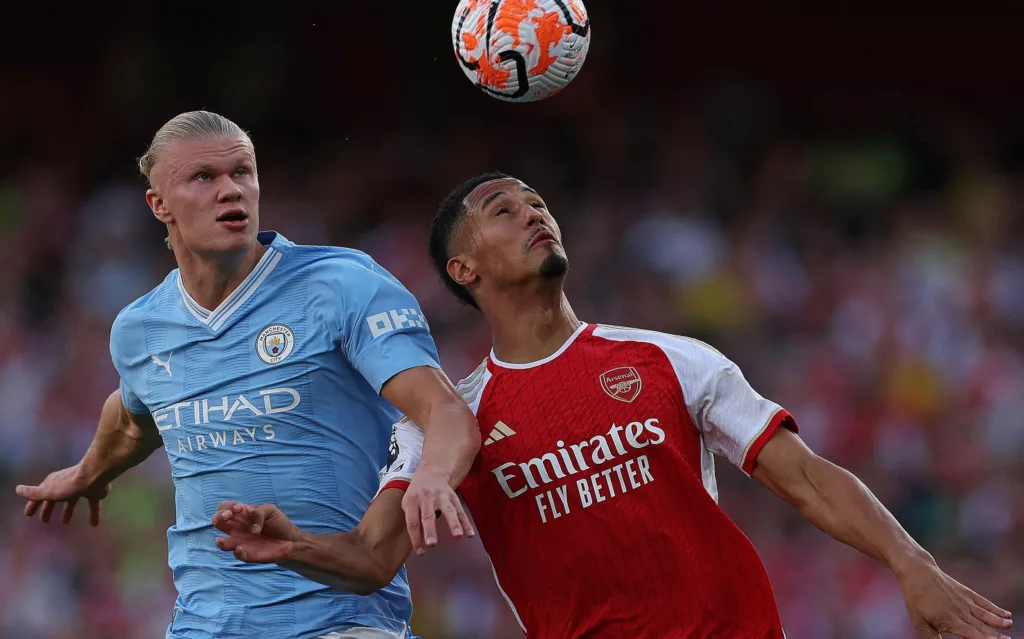
Manchester City also made significant changes during the match, transitioning into a 4-2-3-1 formation when Stones and Nunes came on. These tactical adjustments demonstrated Pep Guardiola’s ability to adapt and tailor his team’s approach to different situations.
Gabriel Martinelli
Gabriel Martinelli, often considered one of Arsenal’s brightest talents, emerged as a pivotal figure in this encounter. His ability to create overloads on the right side, support Gabriel Jesus, and isolate defenders in one-on-one or two-on-two situations with Zinchenko added a new dimension to Arsenal’s attack.
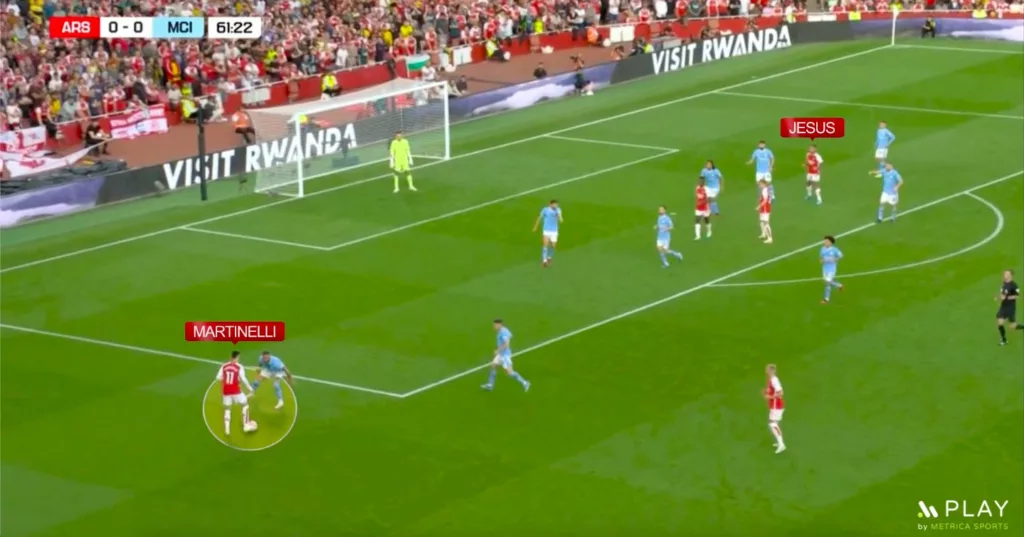
Martinelli’s presence allowed Gabriel Jesus, who is more of a traditional center forward, to be more active in the box. The combination of Martinelli’s work rate and flair made him a constant threat to Manchester City’s defense, forcing them to adjust their defensive approach.
Tactical Flexibility
Throughout the match, both teams displayed a high degree of tactical flexibility. Arsenal’s rotations between players like Zinchenko, Jorginho, and Rice in their build-up play provided variety and options. This flexibility allowed them to break through Manchester City’s press and block on multiple occasions.
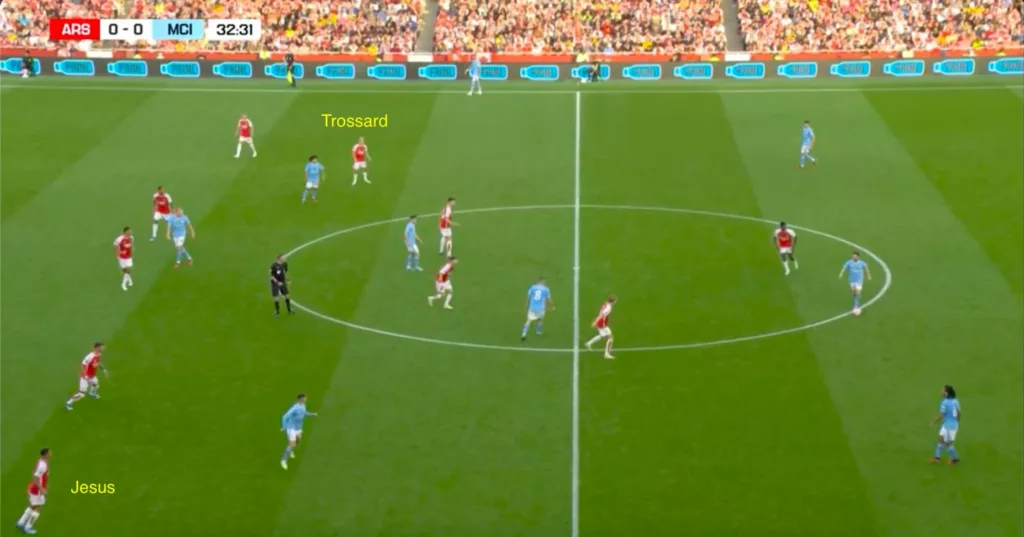
Manchester City, known for their positional play, adapted to Arsenal’s tactics by shifting their shape and approach. This willingness to adjust and find new solutions on the fly highlighted the tactical prowess of both managers.
Defensive Moments
Defensively, both teams had their moments of success and vulnerability. While Manchester City occasionally pressed more aggressively with man-to-man marking, Arsenal created nervy moments for their opponents through their pressing and high-intensity defensive efforts. Ederson’s distribution was typically excellent, but David Raya’s errors in the first half presented Arsenal with dangerous chances.
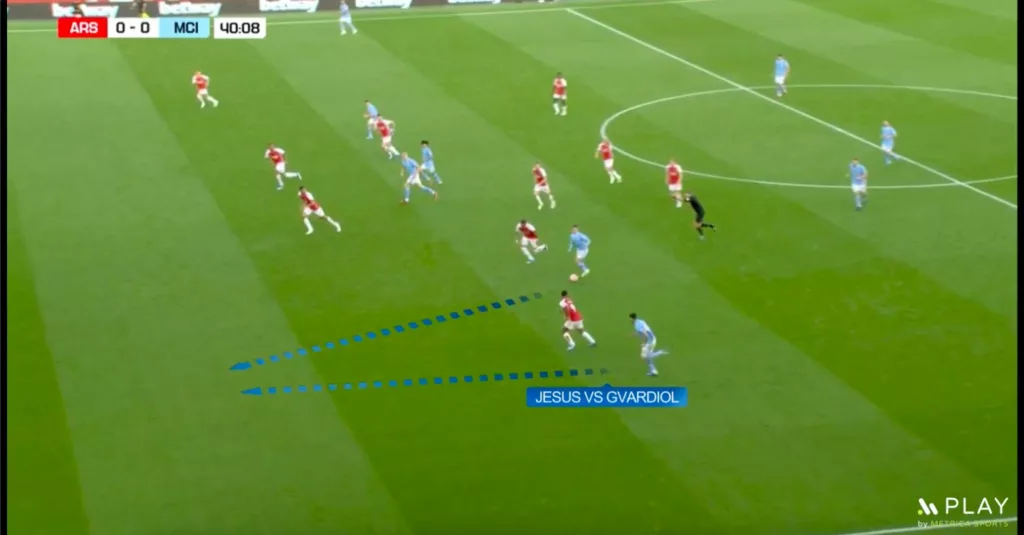
Arsenal’s Winning Goal
The climax of the match came with the winning goal, which showcased the importance of tactical awareness and well-executed substitutions. Arsenal’s defensive substitutions, including Tomiyasu, Havertz, and Partey, provided greater security in midfield and defense. Partey’s vision and precise pass led to Tomiyasu’s instinctive run, Havertz’s expert hold-up play, and ultimately, space for Gabriel Martinelli.
Martinelli, who had been a thorn in Manchester City’s side throughout the match, capitalized on the opportunity, securing Arsenal’s victory and leaving a lasting impression on the game.

Arsenal’s performance in this game marked a significant improvement, especially considering their previous defensive struggles at Emirates Stadium. Both managers showcased their tactical prowess, and the impact of substitutions proved decisive in this thrilling encounter. Gabriel Martinelli’s contribution stood out, highlighting his importance to Arsenal’s attacking arsenal.
In this tactical battle between Pep Guardiola and Mikel Arteta, football fans were treated to a masterclass in strategic thinking and adaptability. The contest provided valuable insights into the intricacies of modern football, where the right tactics and timely substitutions can tip the scales in favor of one team. This thrilling encounter will undoubtedly be remembered for the tactical acumen displayed by both sides and the emergence of Gabriel Martinelli as a key player for Arsenal’s future success.

